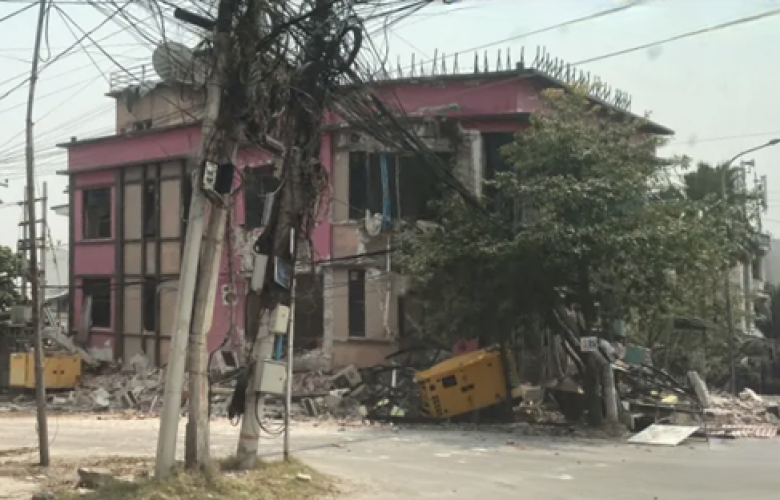Might Myanmar’s earthquake be a catalyst for political change?
Sean Turnell, Senior Fellow Southeast Asia Program, Lowy Institute
2025-04-01
ASIA
GEOPOLITICS
This article first appeared on The Interpreter, published by the Lowy Institute

Disasters of all kinds have been commonplace in Myanmar, the country reeling from one crisis after another, whether environmental or political. A brief decade of relative freedom and economic growth was extinguished in February 2021 by yet another military coup, and the last four years have been amongst the worst the people of Myanmar have experienced.
And now this earthquake.
We don’t know the full death toll yet, and we may never know it given the chaos and mismanagement that is already apparent in the current junta’s response. Given the scale of physical damage from satellite imagery of the affected areas, however, it is likely to be high. Tens of thousands says the modelling of the US Geological Survey, whose findings are, alas, consistent with the assessment of survivors I have been in contact with on the ground in Myanmar.
But chaos and mismanagement are just the least of the sins committed by Myanmar’s military over the last few days. Unusually early to call for international assistance, the junta seems to have seen an opportunity to grab some international legitimacy out of the tragedy, and to access foreign aid to share with supporters in the diminishing areas of Myanmar under their control. Half the country is now in the “liberated” zones of Myanmar’s democratic resistance, but the city of Mandalay remains in the junta’s hands. This storied second city of Myanmar (behind Yangon) was near the epicentre of the quake, and it is the scene of many of the casualties and much of the destruction.
Yet even as rescuers in Mandalay attempt to free people from the rubble (mostly with their bare hands), the young and able-bodied among them have been targets for forced enlistment by the junta into the armed forces. The junta’s military mandatory conscription policy having been a singular failure hitherto, exploiting such a tragic moment in Myanmar’s history, and of the generous impulses of others, seems emblematic of all the men in green stand for.
Elsewhere, intensified junta airstrikes against Myanmar’s democratic opposition have reportedly been launched since the quake, while junta forces are attempting to isolate and deny assistance to conflict areas such as Sagaing. Myanmar’s democratic resistance, as represented by the umbrella National Unity Government (NUG), have committed to a ceasefire of offensive action while the rescue efforts take place, and of which they are a part. No such commitments have been made by the junta.
Meanwhile, Myanmar’s junta is denying access to international media. Of course, this is straight out of their traditional playbook. Scrutiny of their activities, access to information that may actually assist in genuine relief and recovery, has never been the junta’s thing. This cost them back in 2008 when Cyclone Nargis brought about the death of more than 100,000 people in Myanmar, and hastened that brief period when military rule was forced into something of a retreat. It is a characteristic of Myanmar’s military to have forgotten nothing, but likewise never to learn.
The situation in Myanmar is so dire, and both the willingness and capacity of the junta to assist so lacking, that action from the international community – generous, extensive – is immediately necessary.
Here in Australia, the government has acted on this need for earthquake relief, announcing at the weekend the provision of assistance via the International Committee of the Red Cross, and the UN Central Emergency Response Fund, while noting that “Australia does not provide any direct funding to the military regime.”
This is good, but it’s not enough. International aid organisations formally licensed to operate in Myanmar conduct their activities mostly under the junta’s control, however committed and skilled they might be in operating in awkward environments. Accordingly, and in addition to the assistance already announced, aid needs to be provided to teams working on the ground in Myanmar. Such teams are generally aligned with the aforementioned NUG, which accordingly needs to be included as a conduit for international assistance.
Is there anything good from this most recent calamity in Myanmar?
It’s not obvious perhaps, but historically in Myanmar disasters are seen as cosmic judgements against evil and unjust rulers. If this is the case the verdict seems a sound one. Now for the remedy.
Membership
NZIIA membership is open to anyone interested in understanding the importance of global affairs to the political and economic well-being of New Zealand.